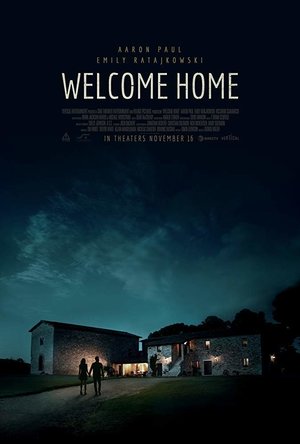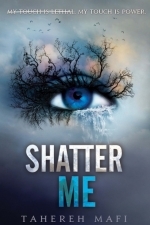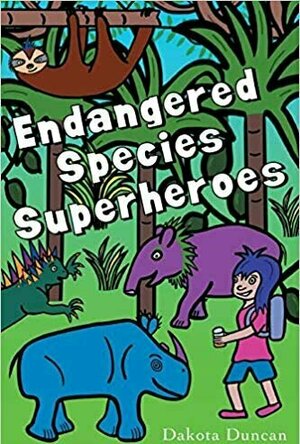Search
Search results

Potty Time with Elmo
Education and Book
App
Elmo reads this animated storybook and song app that will help teach your child about potty training...
Hazel (1853 KP) rated Touching the Rock: An Experience of Blindness (Notes on Blindness Film Tie-in) in Books
May 23, 2017
Eye-opener (if you pardon the pun)
I received this book for free through Goodreads First Reads.
It is not often a blind man writes a book, and “write” is a word used due to the lack of a better. John M. Hull gradually lost his sight, registering as blind in 1980, a couple of days before the birth of his son. Although anticipating the event, John struggled to come to terms with his new circumstances and adjust to a new way of living. From 1983 through to 1985, John recorded his thoughts on tape, in diary form, as a way to ascertain and understand his predicament. Originally titled Touching the Rock (1990), John’s book has been republished as Notes on Blindness after the release of the film of the same name.
Initially, John made recordings every day, dictating the everyday occurrences he encountered. Amazingly, despite his disability, John was able to continue as a university lecturer and delve deeper into the world of theology. The way John thinks things through as he speaks reflects his academic abilities. Although he may have despaired at the thoughts of not being able to see his children, he had a fairly positive outlook on life.
John’s thought capacity and religious ideology are evident in his assemblage of diary entries. As a blind person, he learns to see the world in an alternative way, and often feels closer to God as a result. Through these new experiences, John begins to see the light despite the darkness.
The metaphorical descriptions of blindness help the reader to understand the horror and difficulties not being able to see visually provokes. This is heightened by John’s recordings of the bad dreams he often suffers, in which he is able to see. His fixations on these dreams are assumedly a fascination with visual imagery, which he does not have access to in his waking life.
It is hard not feel sorry for John as he reports the conversations he has with his young children. The effort to communicate and play with them is far greater than a seeing parent. Remarkably, as John begins to adjust to his new lifestyle, his children take the situation in their stride.
Notes on Blindness is also an educational narrative for those without sight problems. John explains the things other people, in attempts to be helpful, do that result in making things far more confusing for John as he tries to navigate his way from one place to another. Despite what most think, blind people are fairly good at walking routes they are familiar with, and, with the help of a stick, can safely travel through new areas. Once people start shouting instructions, it is difficult to pay attention to the location and listen to everyone else at the same time.
John’s voice is extremely articulate, and his thoughts profound, which may suggest heavy editing when compiling the recordings into written form. However, as he is an academician, his eloquence of speech does not feel forced or faked.
Notes on Blindness remains the same as the original publication but with the added inclusion of an introduction by Cathy Rentzenbrink, and an epilogue by his wife Marilyn, written in 2016, a year after his death. These, the latter in particular, provide an insight into how John’s blindness affected those around him and emphasises what a truly remarkable man he was.
Of the many memoirs available on bookshelves today, Notes on Blindness is a truly unique publication. It is not telling a story, or recounting a well-lived life, but gives great insight into the world of the blind. As John’s thoughts were not originally recorded with intention of being available to everyone, they are all the more personal and honest, provoking emotion and providing the reader with a new way of seeing. It is a book that will stay with you for a very long time.
It is not often a blind man writes a book, and “write” is a word used due to the lack of a better. John M. Hull gradually lost his sight, registering as blind in 1980, a couple of days before the birth of his son. Although anticipating the event, John struggled to come to terms with his new circumstances and adjust to a new way of living. From 1983 through to 1985, John recorded his thoughts on tape, in diary form, as a way to ascertain and understand his predicament. Originally titled Touching the Rock (1990), John’s book has been republished as Notes on Blindness after the release of the film of the same name.
Initially, John made recordings every day, dictating the everyday occurrences he encountered. Amazingly, despite his disability, John was able to continue as a university lecturer and delve deeper into the world of theology. The way John thinks things through as he speaks reflects his academic abilities. Although he may have despaired at the thoughts of not being able to see his children, he had a fairly positive outlook on life.
John’s thought capacity and religious ideology are evident in his assemblage of diary entries. As a blind person, he learns to see the world in an alternative way, and often feels closer to God as a result. Through these new experiences, John begins to see the light despite the darkness.
The metaphorical descriptions of blindness help the reader to understand the horror and difficulties not being able to see visually provokes. This is heightened by John’s recordings of the bad dreams he often suffers, in which he is able to see. His fixations on these dreams are assumedly a fascination with visual imagery, which he does not have access to in his waking life.
It is hard not feel sorry for John as he reports the conversations he has with his young children. The effort to communicate and play with them is far greater than a seeing parent. Remarkably, as John begins to adjust to his new lifestyle, his children take the situation in their stride.
Notes on Blindness is also an educational narrative for those without sight problems. John explains the things other people, in attempts to be helpful, do that result in making things far more confusing for John as he tries to navigate his way from one place to another. Despite what most think, blind people are fairly good at walking routes they are familiar with, and, with the help of a stick, can safely travel through new areas. Once people start shouting instructions, it is difficult to pay attention to the location and listen to everyone else at the same time.
John’s voice is extremely articulate, and his thoughts profound, which may suggest heavy editing when compiling the recordings into written form. However, as he is an academician, his eloquence of speech does not feel forced or faked.
Notes on Blindness remains the same as the original publication but with the added inclusion of an introduction by Cathy Rentzenbrink, and an epilogue by his wife Marilyn, written in 2016, a year after his death. These, the latter in particular, provide an insight into how John’s blindness affected those around him and emphasises what a truly remarkable man he was.
Of the many memoirs available on bookshelves today, Notes on Blindness is a truly unique publication. It is not telling a story, or recounting a well-lived life, but gives great insight into the world of the blind. As John’s thoughts were not originally recorded with intention of being available to everyone, they are all the more personal and honest, provoking emotion and providing the reader with a new way of seeing. It is a book that will stay with you for a very long time.
Carma (21 KP) rated Worth the Wait (Guthrie Brothers #2) in Books
Jun 17, 2019
Worth the wait is a follow up book to Don’t Tempt Me, which was first released in July 2016. I happened upon Don’t Tempt Me after completing a book by another author. I loved it and was hungry for a continuation of the Guthrie Brothers story. After waiting for months and months its finally available to read to be transported to Clearbrook once again. Lori Foster, honestly, is one of my favorite authors. She has the ability to put you right in the middle of each and every book she writes. You feel the emotions each character feels, you can hear the sounds, almost smell the smells, and picture each character by her incredible descriptions of people and their surroundings. Worth the Wait is about main characters Hogan Guthrie and Violet Shaw. We met both characters in Don’t Tempt Me and got a muted sense of their attraction to one another. While I loved the characters of Hogan and Colt in Don’t Tempt Me, I don’t know if that transferred over to Worth the Wait where Hogan is concerned. Colt is a dream kid, funny, helpful, loves his family. But I found myself wishing I knew more about Hogan, overall his back-story seemed rushed along.
As with most Lori Foster novels we find ourselves getting involved in secondary characters and stories both separate from or including main characters. Some we hope to see get a book of their own (Barber, Colt) and some well maybe we don’t. Worth the Wait has a possible don’t with a secondary romance between Nathan Hawley and Brooklin Sweet. I enjoyed Nathan’s brief introduction in Don’t Tempt Me but I felt like his story was just randomly inserted in the book as a way to fill the pages. After finishing the book I feel like I know a little more about Nathan but mostly that his story was just a way to fill the pages between Hogan and Violet’s dance around each other. I know Nathan wasn’t a main character for this book and I know he was a friend of Hogan and Jason. I also know his story with Brooklin ties in to the story of Hogan and Violet, I just don’t feel like his time was in this book.
Seemingly I felt like the story between Hogan and Violet dragged on a little long with some interactions taking a long time on mundane things and speeding through things that may have set up a bigger connection between them. I think more time could have been spent on Violet’s family life, her connection with her uncle etc and grow that a little more for her back-story. Both main characters fell a little flat with detail on the who/what/why of their pasts. Don’t get me wrong, they definitely felt right for each other, I just didn’t get swept away by their romance as I normally do with a Lori Foster novel.
Overall I enjoyed Worth the Wait, even the parts that bug me like being able to see someone roll their eyes behind big ridiculous sunglasses, but it probably won’t be one book I go back to read and read over again (i.e. Rowdy, Trace, Zane to name a few). Sadly this book just didn’t grab my uninterrupted full interest, this time. But I know Lori Foster will grab my attention over and over again with each new book she publishes. I received Worth the Wait as an ARC in exchange for an honest review (watch out because blunt is my middle name). Hope this review helps now hurry and buy your own copy of Worth the Wait to prove me wrong, everyone loves to be right!!
As with most Lori Foster novels we find ourselves getting involved in secondary characters and stories both separate from or including main characters. Some we hope to see get a book of their own (Barber, Colt) and some well maybe we don’t. Worth the Wait has a possible don’t with a secondary romance between Nathan Hawley and Brooklin Sweet. I enjoyed Nathan’s brief introduction in Don’t Tempt Me but I felt like his story was just randomly inserted in the book as a way to fill the pages. After finishing the book I feel like I know a little more about Nathan but mostly that his story was just a way to fill the pages between Hogan and Violet’s dance around each other. I know Nathan wasn’t a main character for this book and I know he was a friend of Hogan and Jason. I also know his story with Brooklin ties in to the story of Hogan and Violet, I just don’t feel like his time was in this book.
Seemingly I felt like the story between Hogan and Violet dragged on a little long with some interactions taking a long time on mundane things and speeding through things that may have set up a bigger connection between them. I think more time could have been spent on Violet’s family life, her connection with her uncle etc and grow that a little more for her back-story. Both main characters fell a little flat with detail on the who/what/why of their pasts. Don’t get me wrong, they definitely felt right for each other, I just didn’t get swept away by their romance as I normally do with a Lori Foster novel.
Overall I enjoyed Worth the Wait, even the parts that bug me like being able to see someone roll their eyes behind big ridiculous sunglasses, but it probably won’t be one book I go back to read and read over again (i.e. Rowdy, Trace, Zane to name a few). Sadly this book just didn’t grab my uninterrupted full interest, this time. But I know Lori Foster will grab my attention over and over again with each new book she publishes. I received Worth the Wait as an ARC in exchange for an honest review (watch out because blunt is my middle name). Hope this review helps now hurry and buy your own copy of Worth the Wait to prove me wrong, everyone loves to be right!!
Lucy Buglass (45 KP) rated Welcome Home (2018) in Movies
Jun 20, 2019
The holiday from hell
We’ve all had holidays that didn’t go according to plan, but George Ratliff’s new thriller takes this idea to a whole new level. Welcome Home follows couple Cassie and Bryan as they travel to Italy together. They’ve rented a secluded, spacious home for a few days, so they can spend some quality time together. So far, so simple. However, it’s soon revealed that they’ve been having relationship problems due to Cassie having a drunken one night stand. It’s clear that this isn’t going to be an easy trip for them, and that’s before we meet the real threat.
Aaron Paul and Emily Ratajkowski are great in the lead roles. They feel like your everyday, plausible couple who are simply trying to repair their relationship. I found myself rooting for them and hoping they could reconnect throughout. Despite the slow pacing in places, I did genuinely care about them as characters. Without the strength of their acting, I think this film might have struggled in places as some of it seemed to drag or could’ve easily been cut out. Welcome Home does have similarities to the 2008 film The Strangers, in which see a strained relationship set within a secluded summer home, with the couple being terrorised by masked murderers.
This film’s antagonist, Frederico, is less ambiguous than that, and instead spends time with the couple and tries to befriend them in order to gain their trust. Cassie is a lot more receptive to this than Bryan, who is distrustful of Frederico after he brought Cassie back to the house when she sprained her ankle whilst running. He believes something else is going on, based on the one night stand. At first they believe he’s a neighbour, so nothing really seems out of the ordinary. Then, it starts to get weird. He says some strange things and starts showing up uninvited, even running into them on the street and deciding to turn up to the house to cook dinner.
Every second that Frederico’s on the screen is an uncomfortable one, and you know he’s not the innocent person he’s pretending to be. It’s only a matter of time before his true intentions are revealed to the couple, putting them both in danger. Italian actor Riccardo Scamarcio really blew me away in this film and I’m excited to see more from him.
Although it takes a while to get going, the second and third act of Welcome Home is a tense and unnerving experience. Frederico goes from friendly, helpful neighbour to a creepy psychopath very quickly, and it turns out he has very dark intentions for the couple. He spends the film manipulating them and turning them against each other. I won’t spoil it for you, but it turns this couple’s holiday into a complete nightmare. I did quite like the big reveal at the end, though it seems a little far-fetched it’s not beyond the realms of possibility given the digital age that we live in. This fact is emphasised by the voyeuristic nature of the camera, how we’re always peeking around doors or watching things we shouldn’t be.
I have seen stronger thrillers with better pacing, but Welcome Home is certainly an entertaining watch if you’re looking for a new, exciting story with a strong cast list. It puts a fun twist on your classic home invasion horror, with a charming, magnetic antagonist to really lure you in. I’d recommend giving it a go if you get the opportunity, as it’s worth it for the characters and the ending.
https://lucygoestohollywood.com/2018/11/13/the-holiday-from-hell-a-review-of-welcome-home/
Aaron Paul and Emily Ratajkowski are great in the lead roles. They feel like your everyday, plausible couple who are simply trying to repair their relationship. I found myself rooting for them and hoping they could reconnect throughout. Despite the slow pacing in places, I did genuinely care about them as characters. Without the strength of their acting, I think this film might have struggled in places as some of it seemed to drag or could’ve easily been cut out. Welcome Home does have similarities to the 2008 film The Strangers, in which see a strained relationship set within a secluded summer home, with the couple being terrorised by masked murderers.
This film’s antagonist, Frederico, is less ambiguous than that, and instead spends time with the couple and tries to befriend them in order to gain their trust. Cassie is a lot more receptive to this than Bryan, who is distrustful of Frederico after he brought Cassie back to the house when she sprained her ankle whilst running. He believes something else is going on, based on the one night stand. At first they believe he’s a neighbour, so nothing really seems out of the ordinary. Then, it starts to get weird. He says some strange things and starts showing up uninvited, even running into them on the street and deciding to turn up to the house to cook dinner.
Every second that Frederico’s on the screen is an uncomfortable one, and you know he’s not the innocent person he’s pretending to be. It’s only a matter of time before his true intentions are revealed to the couple, putting them both in danger. Italian actor Riccardo Scamarcio really blew me away in this film and I’m excited to see more from him.
Although it takes a while to get going, the second and third act of Welcome Home is a tense and unnerving experience. Frederico goes from friendly, helpful neighbour to a creepy psychopath very quickly, and it turns out he has very dark intentions for the couple. He spends the film manipulating them and turning them against each other. I won’t spoil it for you, but it turns this couple’s holiday into a complete nightmare. I did quite like the big reveal at the end, though it seems a little far-fetched it’s not beyond the realms of possibility given the digital age that we live in. This fact is emphasised by the voyeuristic nature of the camera, how we’re always peeking around doors or watching things we shouldn’t be.
I have seen stronger thrillers with better pacing, but Welcome Home is certainly an entertaining watch if you’re looking for a new, exciting story with a strong cast list. It puts a fun twist on your classic home invasion horror, with a charming, magnetic antagonist to really lure you in. I’d recommend giving it a go if you get the opportunity, as it’s worth it for the characters and the ending.
https://lucygoestohollywood.com/2018/11/13/the-holiday-from-hell-a-review-of-welcome-home/
Hazel (1853 KP) rated Notes on Blindness: A Journey Through The Dark in Books
Dec 17, 2018
<I>I received this book for free through Goodreads First Reads.</I>
It is not often a blind man writes a book, and “write” is a word used due to the lack of a better. John M. Hull gradually lost his sight, registering as blind in 1980, a couple of days before the birth of his son. Although anticipating the event, John struggled to come to terms with his new circumstances and adjust to a new way of living. From 1983 through to 1985, John recorded his thoughts on tape, in diary form, as a way to ascertain and understand his predicament. Originally titled <I>Touching the Rock</I> (1990), John’s book has been republished as <I>Notes on Blindness</i> after the release of the film of the same name.
Initially, John made recordings every day, dictating the everyday occurrences he encountered. Amazingly, despite his disability, John was able to continue as a university lecturer and delve deeper into the world of theology. The way John thinks things through as he speaks reflects his academic abilities. Although he may have despaired at the thoughts of not being able to see his children, he had a fairly positive outlook on life.
John’s thought capacity and religious ideology are evident in his assemblage of diary entries. As a blind person, he learns to see the world in an alternative way, and often feels closer to God as a result. Through these new experiences, John begins to see the light despite the darkness.
The metaphorical descriptions of blindness help the reader to understand the horror and difficulties not being able to see visually provokes. This is heightened by John’s recordings of the bad dreams he often suffers, in which he is able to see. His fixations on these dreams are assumedly a fascination with visual imagery, which he does not have access to in his waking life.
It is hard not feel sorry for John as he reports the conversations he has with his young children. The effort to communicate and play with them is far greater than a seeing parent. Remarkably, as John begins to adjust to his new lifestyle, his children take the situation in their stride.
<i>Notes on Blindness</i> is also an educational narrative for those without sight problems. John explains the things other people, in attempts to be helpful, do that result in making things far more confusing for John as he tries to navigate his way from one place to another. Despite what most think, blind people are fairly good at walking routes they are familiar with, and, with the help of a stick, can safely travel through new areas. Once people start shouting instructions, it is difficult to pay attention to the location and listen to everyone else at the same time.
John’s voice is extremely articulate, and his thoughts profound, which may suggest heavy editing when compiling the recordings into written form. However, as he is an academician, his eloquence of speech does not feel forced or faked.
<i>Notes on Blindness</i> remains the same as the original publication but with the added inclusion of an introduction by Cathy Rentzenbrink, and an epilogue by his wife Marilyn, written in 2016, a year after his death. These, the latter in particular, provide an insight into how John’s blindness affected those around him and emphasises what a truly remarkable man he was.
Of the many memoirs available on bookshelves today,<i> Notes on Blindness</i> is a truly unique publication. It is not telling a story, or recounting a well-lived life, but gives great insight into the world of the blind. As John’s thoughts were not originally recorded with intention of being available to everyone, they are all the more personal and honest, provoking emotion and providing the reader with a new way of seeing. It is a book that will stay with you for a very long time.
It is not often a blind man writes a book, and “write” is a word used due to the lack of a better. John M. Hull gradually lost his sight, registering as blind in 1980, a couple of days before the birth of his son. Although anticipating the event, John struggled to come to terms with his new circumstances and adjust to a new way of living. From 1983 through to 1985, John recorded his thoughts on tape, in diary form, as a way to ascertain and understand his predicament. Originally titled <I>Touching the Rock</I> (1990), John’s book has been republished as <I>Notes on Blindness</i> after the release of the film of the same name.
Initially, John made recordings every day, dictating the everyday occurrences he encountered. Amazingly, despite his disability, John was able to continue as a university lecturer and delve deeper into the world of theology. The way John thinks things through as he speaks reflects his academic abilities. Although he may have despaired at the thoughts of not being able to see his children, he had a fairly positive outlook on life.
John’s thought capacity and religious ideology are evident in his assemblage of diary entries. As a blind person, he learns to see the world in an alternative way, and often feels closer to God as a result. Through these new experiences, John begins to see the light despite the darkness.
The metaphorical descriptions of blindness help the reader to understand the horror and difficulties not being able to see visually provokes. This is heightened by John’s recordings of the bad dreams he often suffers, in which he is able to see. His fixations on these dreams are assumedly a fascination with visual imagery, which he does not have access to in his waking life.
It is hard not feel sorry for John as he reports the conversations he has with his young children. The effort to communicate and play with them is far greater than a seeing parent. Remarkably, as John begins to adjust to his new lifestyle, his children take the situation in their stride.
<i>Notes on Blindness</i> is also an educational narrative for those without sight problems. John explains the things other people, in attempts to be helpful, do that result in making things far more confusing for John as he tries to navigate his way from one place to another. Despite what most think, blind people are fairly good at walking routes they are familiar with, and, with the help of a stick, can safely travel through new areas. Once people start shouting instructions, it is difficult to pay attention to the location and listen to everyone else at the same time.
John’s voice is extremely articulate, and his thoughts profound, which may suggest heavy editing when compiling the recordings into written form. However, as he is an academician, his eloquence of speech does not feel forced or faked.
<i>Notes on Blindness</i> remains the same as the original publication but with the added inclusion of an introduction by Cathy Rentzenbrink, and an epilogue by his wife Marilyn, written in 2016, a year after his death. These, the latter in particular, provide an insight into how John’s blindness affected those around him and emphasises what a truly remarkable man he was.
Of the many memoirs available on bookshelves today,<i> Notes on Blindness</i> is a truly unique publication. It is not telling a story, or recounting a well-lived life, but gives great insight into the world of the blind. As John’s thoughts were not originally recorded with intention of being available to everyone, they are all the more personal and honest, provoking emotion and providing the reader with a new way of seeing. It is a book that will stay with you for a very long time.
Sophia (Bookwyrming Thoughts) (530 KP) rated Shatter Me in Books
Jan 23, 2020
Lupe and I made a random, out of the blue deal where I read <i>Shatter Me</i> (the entire series), and she finally gets her act together to read the amazingness called <i>Harry Potter</i> (the entire series). <b>She's trekking her way merrily - I've made a fan out of her yet. #SophiaIsProud</b>
<b>Let’s be honest here: she gets the better deal.</b> This trilogy and I will have a strong love/hate relationship that knows no bounds because all I wanted to do was:
<ul>
<li>Throw my iPad at Lupe if she shows herself (not literally)</li>
<li>Hug the book</li>
<li>Die of laughter</li>
<li>Stop torturing myself</li>
<li>Repeat</li>
</ul>
<i>Shatter Me</i> is straight up the alley of everything I will read because a character who kills anything they touch is a golden novel. It’s like King Midas’s curse gone completely wrong.
But unfortunately, it’s my cup of tea with way too much sugar and other weird flavors.
<b>
</b> <b>There is a massive amount of numbers.</b> The first 5-6 chapters had my eyes crying because 1) I really hate numbers, 2) numbers just remind me of math, 3) I don’t like math, 4) it reminds me of Calculus, which went POORLY (AKA failed the final with a giant fish flop) and 5) I think I’m allergic to numbers.
<b>
</b> <b>There is also a lot of strikeouts.</b> Honestly, I can’t complain, because I use strikeouts on my own blog and if I say I hated them I would be contradicting myself. I’ve basically learned that strikeouts take up space and are sometimes unnecessary, which is the case with <i>Shatter Me</i>.
There are fewer numbers and strikeouts as the book progresses, but they remain. My eyes cry less, and I <span style="text-decoration: line-through;">whine</span> complain less about the massive use of numbers to Lupe. Poor Anelise had to witness this (as it is the tragedy of being a coblogger and dealing with two beans who actually know each other personally and outside blogging).
<b>
</b> <b>I don’t care about Adam or Warner.</b> I think Adam is a shallow cheese ball (it might be his romance with Juliette because I cringed every time they’re doing romance things) and Warner is a creepy pervert, so I don’t understand why Lupe swoons over Warner. If he’s still a creepy pervert by book three, I might have to <span style="text-decoration: line-through;">interrogate</span> question Lupe on her fictional boy choices.
<b>
</b> <b>But thanks to Adam, I know about Juliette as a person, so that’s a plus.</b> <b>Does this mean I care about Juliette? No...</b>
If there’s one thing I’ll agree with Lupe on this series, it’s Kenji. He is a precious little bean who deserves so much more page time than he got.
There are a lot of birds. So many birds and no explanation (not even a little). I like metaphors and all, but I still don’t get the concept of a million birds mentioned throughout the book, and Lupe isn’t too helpful. I have to go wallow in misery and torture myself some more.
I’ll be reading the rest of the series for the following reasons:
<ul>
<li>It’s Lupe’s fault</li>
<li>Kenji the precious bean</li>
<li>Why are there so many birds</li>
<li>Mainly it’s just for the sake of Lupe</li>
<li>It brought my reviewing soul back I think</li>
</ul>
<a href="https://bookwyrmingthoughts.com/shatter-me-by-tahereh-mafi-review/"; target="_blank">This review was originally posted on Bookwyrming Thoughts</a>
<b>Let’s be honest here: she gets the better deal.</b> This trilogy and I will have a strong love/hate relationship that knows no bounds because all I wanted to do was:
<ul>
<li>Throw my iPad at Lupe if she shows herself (not literally)</li>
<li>Hug the book</li>
<li>Die of laughter</li>
<li>Stop torturing myself</li>
<li>Repeat</li>
</ul>
<i>Shatter Me</i> is straight up the alley of everything I will read because a character who kills anything they touch is a golden novel. It’s like King Midas’s curse gone completely wrong.
But unfortunately, it’s my cup of tea with way too much sugar and other weird flavors.
<b>
</b> <b>There is a massive amount of numbers.</b> The first 5-6 chapters had my eyes crying because 1) I really hate numbers, 2) numbers just remind me of math, 3) I don’t like math, 4) it reminds me of Calculus, which went POORLY (AKA failed the final with a giant fish flop) and 5) I think I’m allergic to numbers.
<b>
</b> <b>There is also a lot of strikeouts.</b> Honestly, I can’t complain, because I use strikeouts on my own blog and if I say I hated them I would be contradicting myself. I’ve basically learned that strikeouts take up space and are sometimes unnecessary, which is the case with <i>Shatter Me</i>.
There are fewer numbers and strikeouts as the book progresses, but they remain. My eyes cry less, and I <span style="text-decoration: line-through;">whine</span> complain less about the massive use of numbers to Lupe. Poor Anelise had to witness this (as it is the tragedy of being a coblogger and dealing with two beans who actually know each other personally and outside blogging).
<b>
</b> <b>I don’t care about Adam or Warner.</b> I think Adam is a shallow cheese ball (it might be his romance with Juliette because I cringed every time they’re doing romance things) and Warner is a creepy pervert, so I don’t understand why Lupe swoons over Warner. If he’s still a creepy pervert by book three, I might have to <span style="text-decoration: line-through;">interrogate</span> question Lupe on her fictional boy choices.
<b>
</b> <b>But thanks to Adam, I know about Juliette as a person, so that’s a plus.</b> <b>Does this mean I care about Juliette? No...</b>
If there’s one thing I’ll agree with Lupe on this series, it’s Kenji. He is a precious little bean who deserves so much more page time than he got.
There are a lot of birds. So many birds and no explanation (not even a little). I like metaphors and all, but I still don’t get the concept of a million birds mentioned throughout the book, and Lupe isn’t too helpful. I have to go wallow in misery and torture myself some more.
I’ll be reading the rest of the series for the following reasons:
<ul>
<li>It’s Lupe’s fault</li>
<li>Kenji the precious bean</li>
<li>Why are there so many birds</li>
<li>Mainly it’s just for the sake of Lupe</li>
<li>It brought my reviewing soul back I think</li>
</ul>
<a href="https://bookwyrmingthoughts.com/shatter-me-by-tahereh-mafi-review/"; target="_blank">This review was originally posted on Bookwyrming Thoughts</a>
Night Reader Reviews (683 KP) rated Endangered Species Superheroes in Books
Jan 9, 2020
Honest Review for Free Copy of Book
Endangered Species Superheroes by Dakota Duncan is a graphic novel that was not quite what I was expecting. Going off of the title I was expecting the story to be about a group of people that used abilities of endangered animals to be superheroes. That is not quite what this book actually is about. The actual concept of the book is much more interesting than the classic superhero book.
Lindsay lives with her grandfather who owns The Smiling Sloth Wildlife Sanctuary. Lindsey loves helping out at the sanctuary and has a very close relationship with many of the animals that live there. At the sanctuary she assists in taking care of some of the animals by drawing their blood for tests, feeding them, and checking their vitals. Many of these animals at the sanctuary bave been hurt in some way by human carelessness. Lindsay and the animals at the sanctuary have a secret that doesn't come out until Lindsay is attacked by a thug hired by Mace Zogan.
Mace at one point was working with Lindsay's grandfather at the sanctuary. He was arrested at some point for poisoning a bunch of sloths on purpose. Mace breaks out of jail and decides to get his revenge on Lindsay's grandfather by going after Lindsay herself. Mace kidnaps Lindsay and takes her back to his Lab on an island. Mace admits that her was trying to chemically alter animals at his lab to make them more useful to humans. With some help from a few unlikely sources Lindsay gets rescued and Mace is arrested once again.
This book teaches readers about animals and the problems that humans are causing because of all the pollution and trash that we leave laying. At one point it talks about a beach clean-up and the importance of trying to get more people involved. While the book dose have the classic chemicals
creating superheros and bad guys pretending to be police officers it even offers helpful information during a kidnapping. Lindsay calls her grandfather and keeps her phone safely hidden in her backpack when Mace grabs her so that she is able to tell details about what is going on to her grandfather by talking to Mace.
What I liked best about this is that I was surprised to find that it was not Lindsay who had superpowers. The artwork is also bright amd simple enough that I do not think it would distract from the story yet would still be interesting to young readers. The information packed in this book was both a posititve and a negative for me. I didn't really like how the entire thing was so informative that the dialogue felt forced at times. There were multiple times when the flow of the story was disrupted by the addition of extra facts.
The target readers for this book are school aged children, mainly those in early middle school. Elementary students might enjoy this book as well but I feel like it might actually be a bit too long to hold the attention of younger elementary students. I rate this book 2 out of 4 because it felt a little too boring for a children's book with how informative the story was. At the same time some children tend to be very interested in anything that has to so with animals so it might be more interesting than I give it credit for.
https://www.facebook.com/nightreaderreviews
Lindsay lives with her grandfather who owns The Smiling Sloth Wildlife Sanctuary. Lindsey loves helping out at the sanctuary and has a very close relationship with many of the animals that live there. At the sanctuary she assists in taking care of some of the animals by drawing their blood for tests, feeding them, and checking their vitals. Many of these animals at the sanctuary bave been hurt in some way by human carelessness. Lindsay and the animals at the sanctuary have a secret that doesn't come out until Lindsay is attacked by a thug hired by Mace Zogan.
Mace at one point was working with Lindsay's grandfather at the sanctuary. He was arrested at some point for poisoning a bunch of sloths on purpose. Mace breaks out of jail and decides to get his revenge on Lindsay's grandfather by going after Lindsay herself. Mace kidnaps Lindsay and takes her back to his Lab on an island. Mace admits that her was trying to chemically alter animals at his lab to make them more useful to humans. With some help from a few unlikely sources Lindsay gets rescued and Mace is arrested once again.
This book teaches readers about animals and the problems that humans are causing because of all the pollution and trash that we leave laying. At one point it talks about a beach clean-up and the importance of trying to get more people involved. While the book dose have the classic chemicals
creating superheros and bad guys pretending to be police officers it even offers helpful information during a kidnapping. Lindsay calls her grandfather and keeps her phone safely hidden in her backpack when Mace grabs her so that she is able to tell details about what is going on to her grandfather by talking to Mace.
What I liked best about this is that I was surprised to find that it was not Lindsay who had superpowers. The artwork is also bright amd simple enough that I do not think it would distract from the story yet would still be interesting to young readers. The information packed in this book was both a posititve and a negative for me. I didn't really like how the entire thing was so informative that the dialogue felt forced at times. There were multiple times when the flow of the story was disrupted by the addition of extra facts.
The target readers for this book are school aged children, mainly those in early middle school. Elementary students might enjoy this book as well but I feel like it might actually be a bit too long to hold the attention of younger elementary students. I rate this book 2 out of 4 because it felt a little too boring for a children's book with how informative the story was. At the same time some children tend to be very interested in anything that has to so with animals so it might be more interesting than I give it credit for.
https://www.facebook.com/nightreaderreviews

Itsy Bitsy Spider - Educational Activities & Songs
Education and Games
App
~~~ 10 fabulous games and full sing along in one great kids app! ~~~ ~~ 5 beautiful verses of the...

Got It Study - Homework Help
Education and Productivity
App
Stuck on a homework problem, test question, or assignment and need to solve the problem right away? ...





